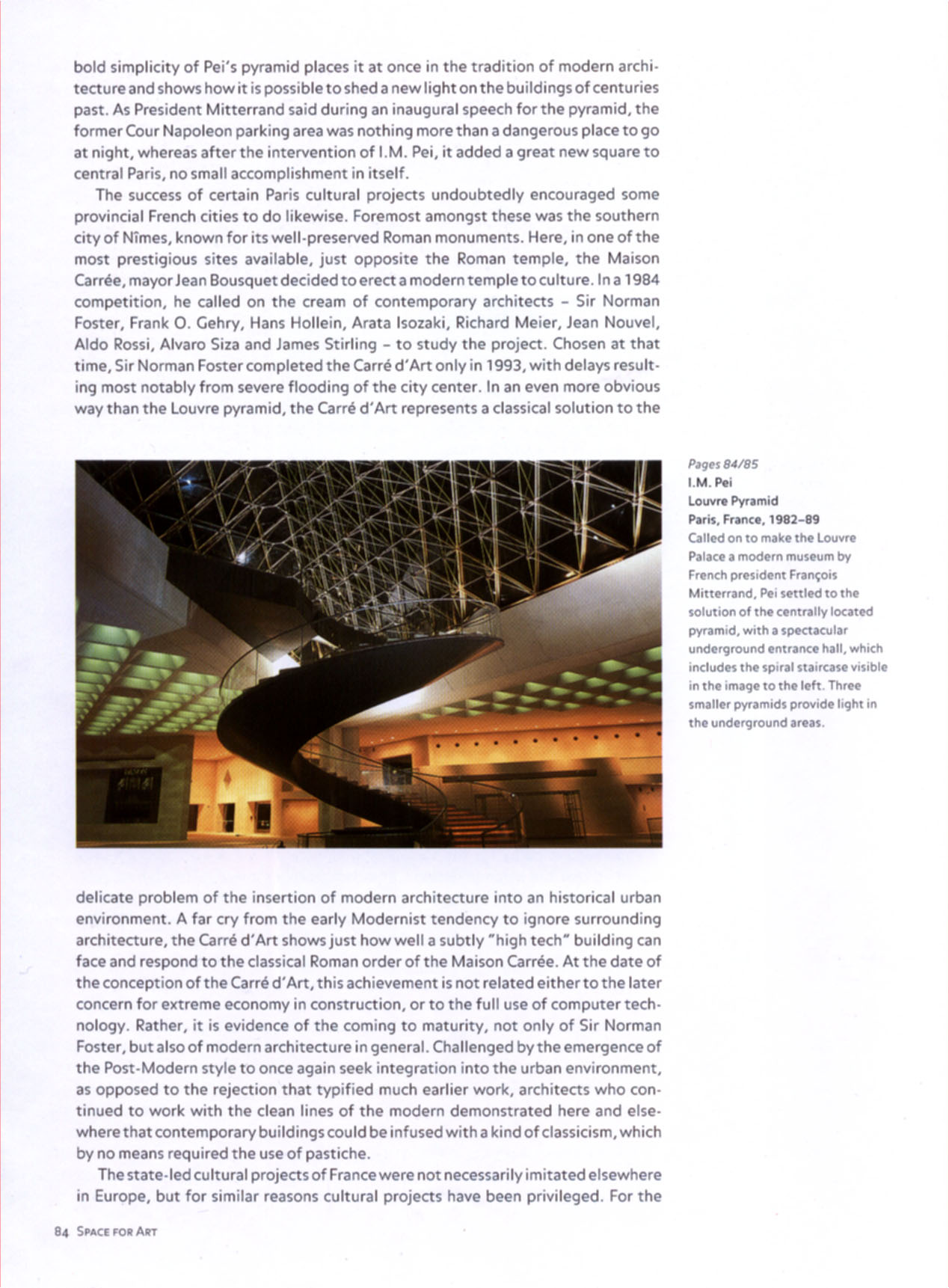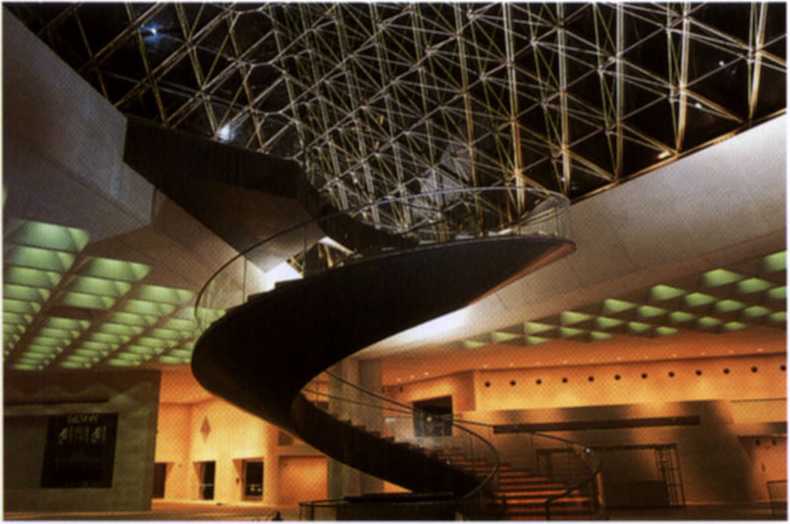76748 New Forms Taschen 078

bold simplicity of Pei's pyramid places it at once in the tradition of modern archi-tecture and shows how it is possible to shed a new light on the buildings of centuries past. As President Mitterrand said during an inaugural speech for the pyramid, the former Cour Napoleon parking area was nothing morę than a dangerous place to go at night, whereas after the intervention of I.M. Pei, it added a great new square to central Paris, no smali accomplishment in itself.
The success of certain Paris cultural projects undoubtedly encouraged some provincial French cities to do likewise. Foremost amongst these was the Southern city of Nimes, known for its well-preserved Roman monuments. Here, in one of the most prestigious sites available, just opposite the Roman tempie, the Maison Carrśe, mayor Jean Bousquet decided to erect a modern tempie to culture. In a 1984 competition, he called on the cream of contemporary architects - Sir Norman Foster, Frank O. Gehry, Hans Hollein, Arata Isozaki, Richard Meier, Jean Nouvel, Aldo Rossi, Alvaro Siza and James Stirling - to study the project. Chosen at that time. Sir Norman Foster completed the Carre d'Art only in 1993, with delays result-ing most notably from severe flooding of the city center. In an even morę obvious way than the louvre pyramid, the Carrć d'Art represents a dassical solution to the

Pagcs84/8S I.M. P»i
Louvrc Pyramid Paris, France. 1982-89
Called on to make the Louvre Pałace a modern museum by French president Franęois Mitterrand. Pei settled to the solution of the centrally located pyramid. with a spectacular underground entrance hall, which inctudes the spiral staircase visible in the image to the left. Three smaller pyramids provide light in the underground areas.
delicate problem of the insertion of modern architecture into an historical urban environment. A far ery from the early Modernist tendency to ignore surrounding architecture, the Carrśd'Art shows just how well a subtly "high tech” building can face and respond to the classical Roman order of the Maison Carree. At the datę of the conception of the Carrś d'Art, this achievement is not related either to the later concern for extreme economy in construction, or to the fuli use of Computer tech-nology. Rather, it is evidence of the coming to maturity, not only of Sir Norman Foster, but also of modern architecture in generał. Challenged by the emergence of the Post-Modern style to once again seek integration into the urban environment, as opposed to the rejection that typified much earlier work, architects who con-tinued to work with the clean lines of the modern demonstrated here and else-where that contemporary buildings could be infused with a kind of classicism, which by no means required the use of pastiche.
The State-led cultural projects of France were not necessarily imitated elsewhere in Europę, but for similar reasons cultural projects have been privileged. For the
84 SpaceforArt
Wyszukiwarka
Podobne podstrony:
New Forms Taschen 053 that his blighted northern city was included at the last moment in the route t
47870 New Forms Taschen 214 Notes 1 Wigloy, Mark, in: Deconstruc-twist Architectur
New Forms Taschen 008 One of Frank O. Gehry s morę successful buildings is his Vitra Design Museum i
New Forms Taschen 037 emphasized again here that aside from France, The Netherlands may be one of th
New Forms Taschen 044 Toyo Ito Shimosuwa Lakę Suwa Museum Shimosuwa-machi, Nagano, Japan, 1990-
New Forms Taschen 054 Although the influence of the French projects may only be peripheral in this i
New Forms Taschen 061 Cesar Pełli Petronas Towers Kuala Lumpur, Malaysia. 1991-96 Wmner of an mvited
New Forms Taschen 071 Holi is one of the morę thoughtful contemporary architeas. He has written, &qu
New Forms Taschen 091 Fumihiko Maki National Museum of Modern Art Kyoto. Japan, 1983-86 Fumihik
New Forms Taschen 092 Mario Borta San Francisco Museum of Modem Art San Francisco, Califomia. 1990-9
New Forms Taschen 098 Antoine Prodock American Heritage Center Laramie, Wyoming. 1987-93 M
New Forms Taschen 119 ern artists to touch fundamenta! elements that are still very much part of eve
New Forms Taschen 138 Europę: Building Art A number of artists have specifically sought, through ins
więcej podobnych podstron